Decades of violin craftsmanship turn Chinese town into global musical instrument industry player
Huangqiao township, a small Chinese town famed for Huangqiao Sesame Cake, a popular traditional snack, produces 950,000 violins a year, accounting for 70 percent of China's annual violin output and 30 percent of the global market.
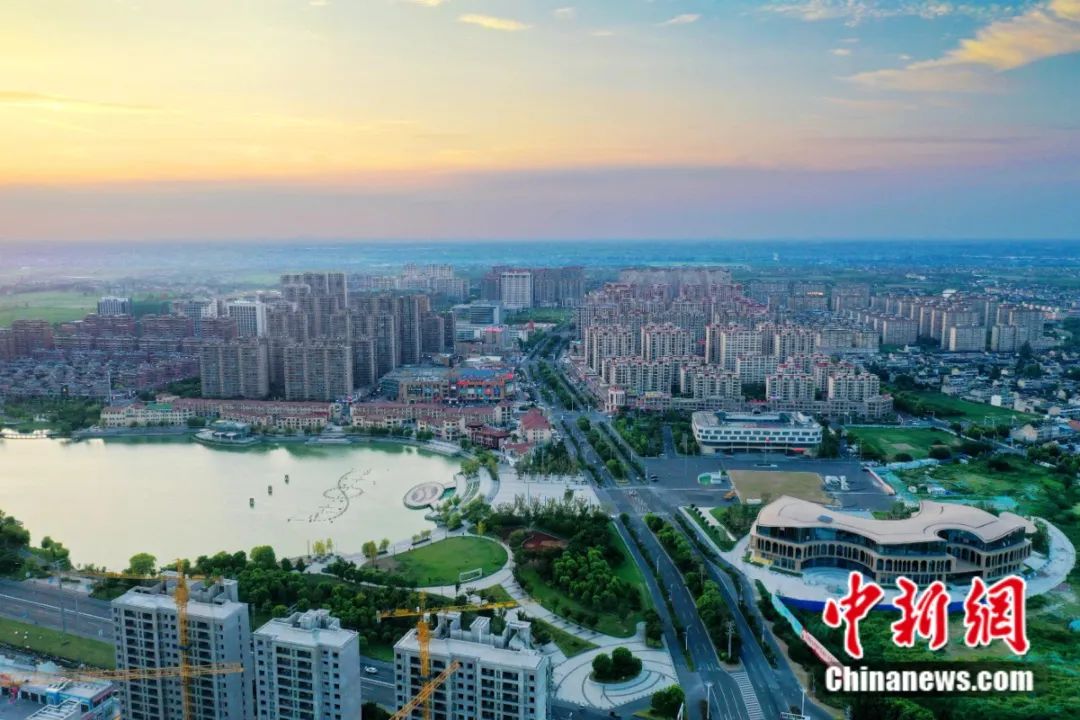
Photo shows an aerial view of Huangqiao township, Taixing city, east China's Jiangsu Province. (Photo/Huang Guojian)
Located in Taixing city, eastern China's Jiangsu Province, Huangqiao now exports over 720,000 violins annually, comprising 53 percent of China's violin exports, with the annual output value of the local violin manufacturing industry exceeding 1 billion yuan ($140 million).
Huangqiao's rise in the violin manufacturing industry began in the 1960s, when people in the township processed violin scrolls and bows in small local workshops for musical instrument factories in east China's Shanghai.
Li Shu, chairman of Huangqiao-based Jiangsu Fengling Musical Instrument Group, used to be an apprentice at a workshop specializing in the production of musical instrument accessories. Driven by a strong desire to acquire expertise as quickly as possible, he learned from skilled craftspeople by day and studied on his own at night, spending 16 hours a day honing his violin-making skills.
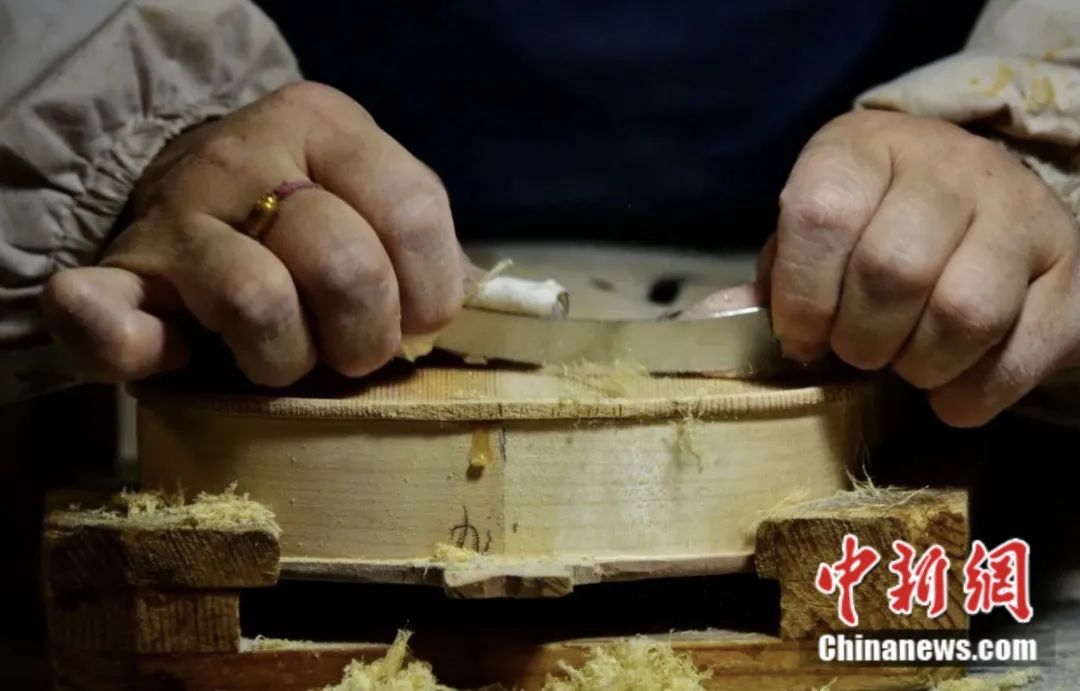
Photo shows a craftsman making a violin at a workshop in Huangqiao township, Taixing city, east China's Jiangsu Province. (Photo/Huang Guojian)
During the early stage of the local violin manufacturing industry, musical instrument accessory workshops in Huangqiao quickly increased their presence in China's domestic market through a low-cost business model.
In 1985, a musical instrument manufacturer in Shanghai reached an agreement for a 10-year joint venture with a local factory, turning it into its branch in Taixing city. The manufacturer in Shanghai was in charge of the technologies, supply and sale of the finished products, while the Taixing branch served as its production base.
"Although it seems like we played the supporting role, this partnership has not only made our factory's production technology and business management capacity 20 years more advanced than before, it has also brought markets and opportunities to us," said Li, who was once the head of the Taixing branch.

Photo shows a violin-making workshop in Huangqiao township, Taixing city, east China's Jiangsu Province. (Photo/Huang Guojian)
Riding the wave of the burgeoning development of local firms, the small factory in Huangqiao became China's top violin producer in terms of annual output by 1995.
In order to expand into the global market, violin-making businesses in Huangqiao have made continuous efforts to make innovations in violin-related materials and techniques. Major breakthroughs in techniques, including an innovative wood treatment technique that enhances violin-making efficiency and the sound quality of violins, have significantly improved the quality of the end products.
After years of development, a complete industrial chain of violin manufacturing has taken shape in Huangqiao. At the same time, supporting enterprises specializing in varnish, machinery, and molds have also sprung up in surrounding areas. As a result, violin manufacturing businesses in Huangqiao saw their global market share quickly rise to the top spot.
Today, Huangqiao has grown into a thriving hub of musical instrument production, boasting an impressive number of over 230 manufacturing-related companies and an annual output value exceeding 2.4 billion yuan. Of the township's over 200,000 residents, more than 30,000 work in musical instrument-related enterprises.
"Creating each of our violins involves meticulous craftsmanship across 197 painstaking steps," said Zhang Wenju, deputy general manager of production at Jiangsu Fengling Musical Instrument Group.
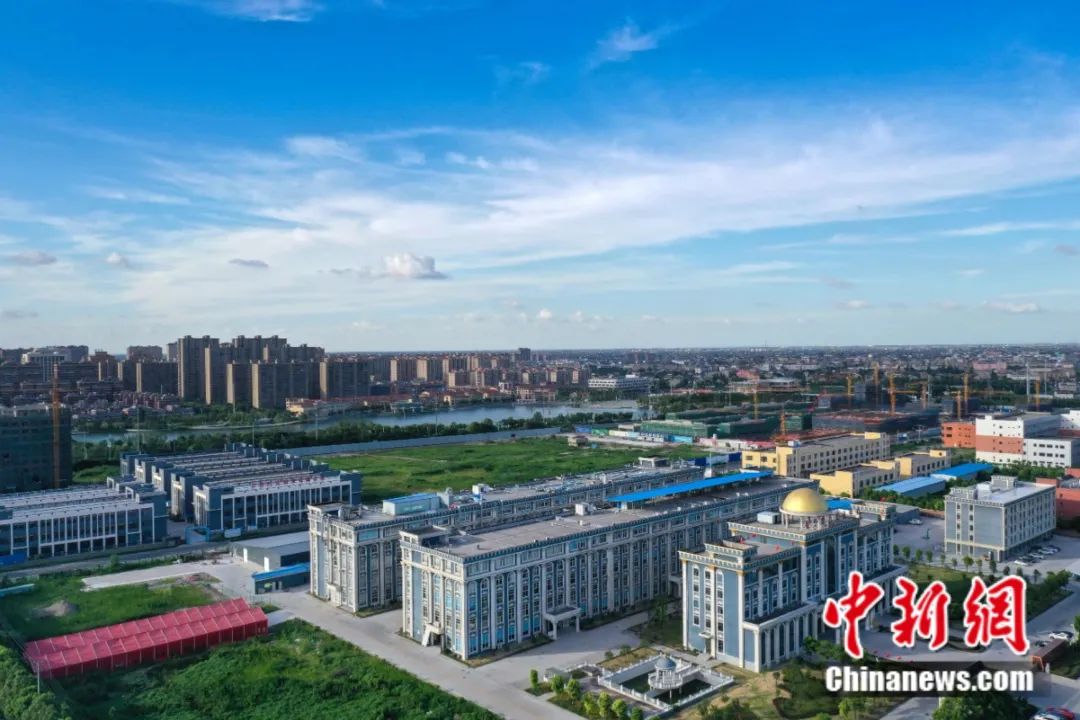
Photo shows an aerial view of the premises of Jiangsu Fengling Musical Instrument Group, the largest violin manufacturer in Huangqiao township, Taixing city, east China's Jiangsu Province. (Photo/Huang Guojian)
Each step, from wood selection to carving, polishing, and varnishing, demands strict quality control, Zhang said.
"It's like sculpting a work of art, in which each step complements the other and not a single step can be omitted," explained Zhang.
"It takes three years for timber to dry before entering a drying chamber. After staying in the drying chamber for a month, the timber is cut open and processed into planks. The hand-crafting process requires about 10 days," Zhang said.
Due to the influence of violins, a Western musical instrument, local residents of Huangqiao have experienced significant changes in their lives. Many local farmers have become skilled workers and craftspeople, specializing in the production of violins.
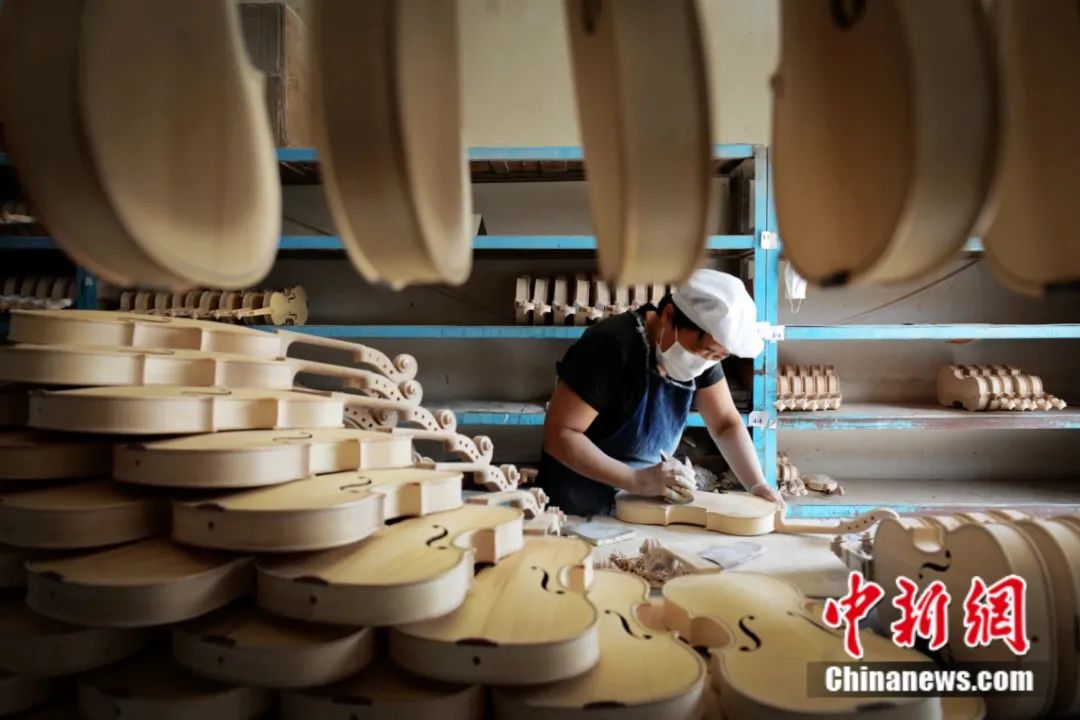
Photo shows a luthier making a violin at a workshop in Huangqiao township, Taixing city, east China's Jiangsu Province. (Photo/Huang Guojian)
Chen Xia, a 37-year old resident of Huangqiao, has been installing strings at a workshop of Jiangsu Fengling Musical Instrument Group, the largest violin manufacturer in Huangqiao, for the past two years. She can now efficiently install strings on 30 to 40 violins per day.
The violin has become an integral part of local people's lives, and almost every child in the locality studies a musical instrument. Enchanting violin melodies can frequently be heard resonating from various corners of the township.
The younger generation of Huangqiao have inherited and carried forward the legacy of violin-making in the township. Xu Xiaofeng, a native of Taixing city, has emerged as one of the most exceptional luthiers in the city. He has studied violin making at prestigious institutions such as the Shanghai Conservatory of Music and China's Central Conservatory of Music, and earned a strong reputation for his craftsmanship in the industry.
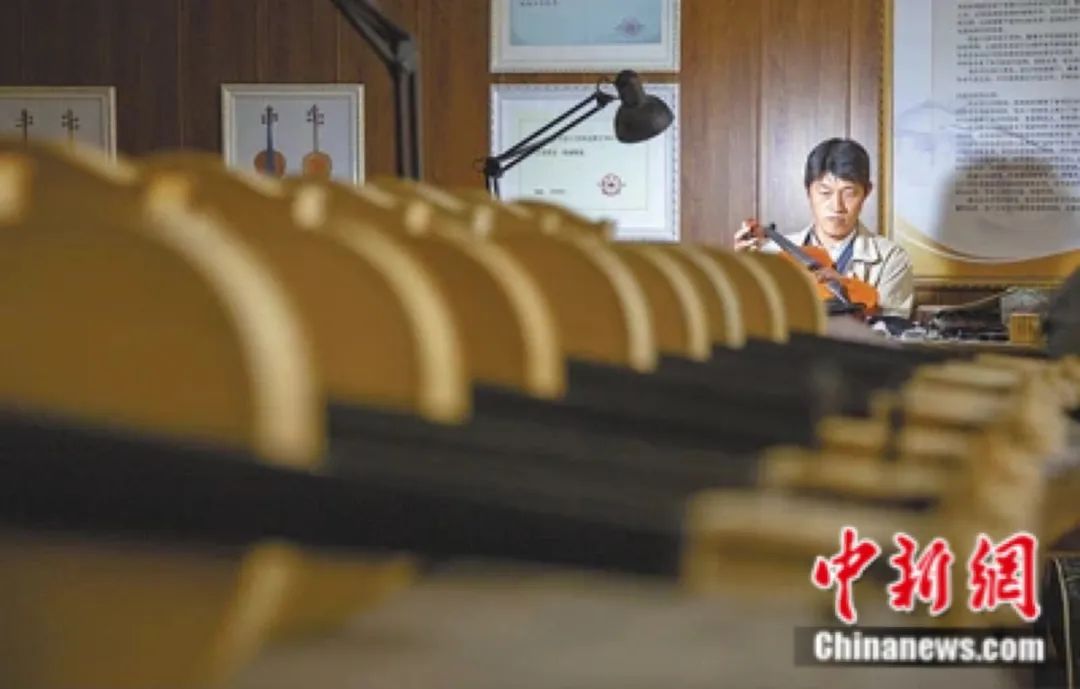
Xu Xiaofeng, one of the top luthiers in Taixing city, east China's Jiangsu Province, makes violins. (Photo/Huang Guojian)
Xu has opened a workshop to provide training in and guidance on professional violin-making techniques for local violin manufacturers, and has trained more than 100 luthiers.
"As the new generation of luthiers have started to assume key roles and responsibilities, they have introduced creative ideas into the industry, further promoting the popularity of violins and enriching the industrial chain," said Qiu Xinliang, founder of a violin workshop located across the street from Jiangsu Fengling Musical Instrument Group.

Students play violins in Huangqiao township, Taixing city, east China's Jiangsu Province. (Photo/Huang Guojian)
According to Qiu, his workshop sells hundreds of violins annually.
Because of its huge influence in China's violin manufacturing industry, since 2017, Huangqiao has hosted the main celebrations in China for World Music Day, an annual music celebration that takes place globally on June 21. The day has become a special festival for Huangqiao residents.
In order to further tap into its booming violin manufacturing industry, Huangqiao is working to build a featured town that integrates the musical instrument manufacturing industry, musical instrument culture, musical culture-themed tourism, and urban functions.
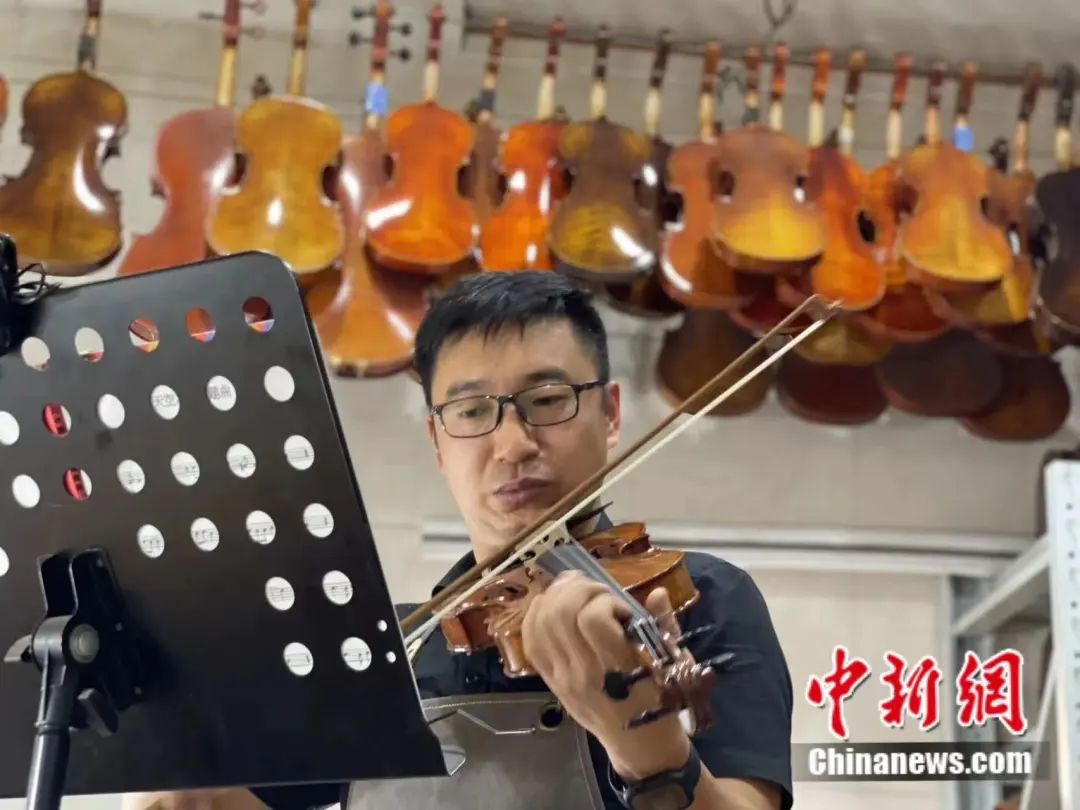
Qiu Xinliang, founder of a violin workshop in Huangqiao township, Taixing city, east China's Jiangsu Province, plays the violin. (Photo/Xu Shanshan)

Photo shows people celebrating World Music Day, an annual music celebration that takes place globally on June 21, in Huangqiao township, Taixing city, east China's Jiangsu Province. (Photo/Huang Guojian)
Photos
Related Stories
- Township in E China turns into globally renowned violin manufacturing center
- Township in E China’s Jiangsu gains international reputation thanks to decades of accumulated experience in violin manufacturing
- Participants compete online at Shanghai int'l violin contest
- Small Chinese county becomes international player in violin production
- Violinist lifts cast of young talent
- Tibetan girl's violin hobby
Copyright © 2023 People's Daily Online. All Rights Reserved.









